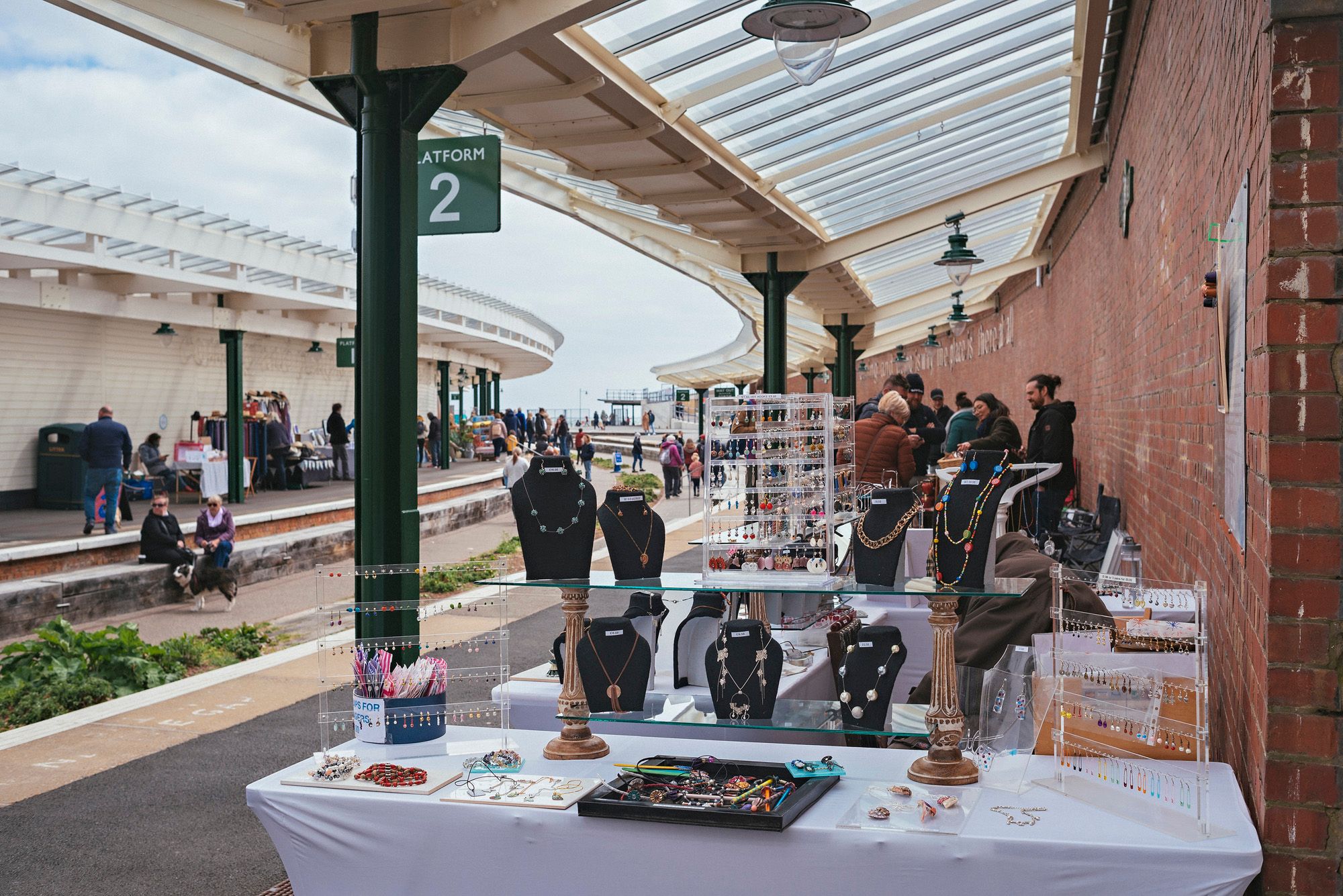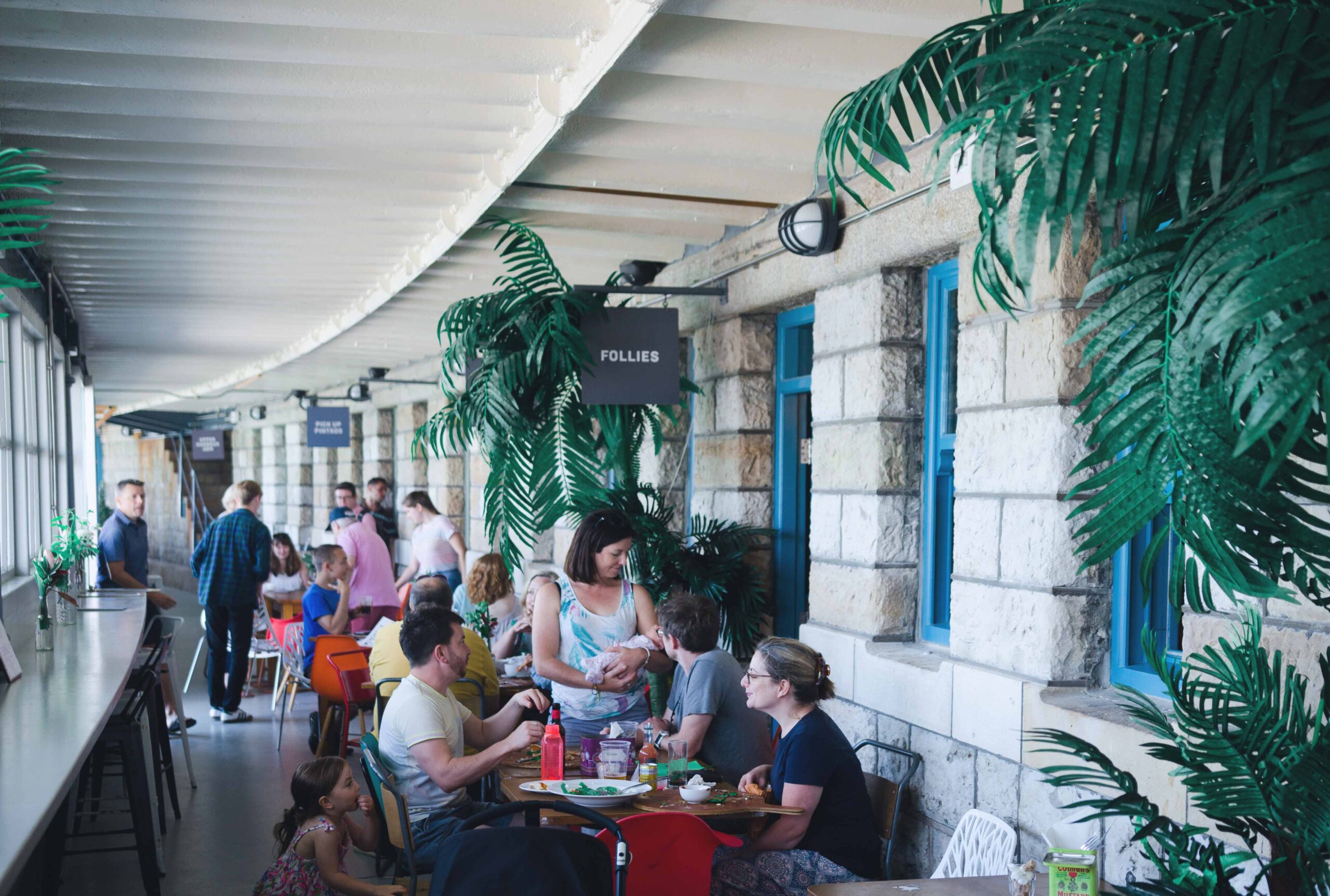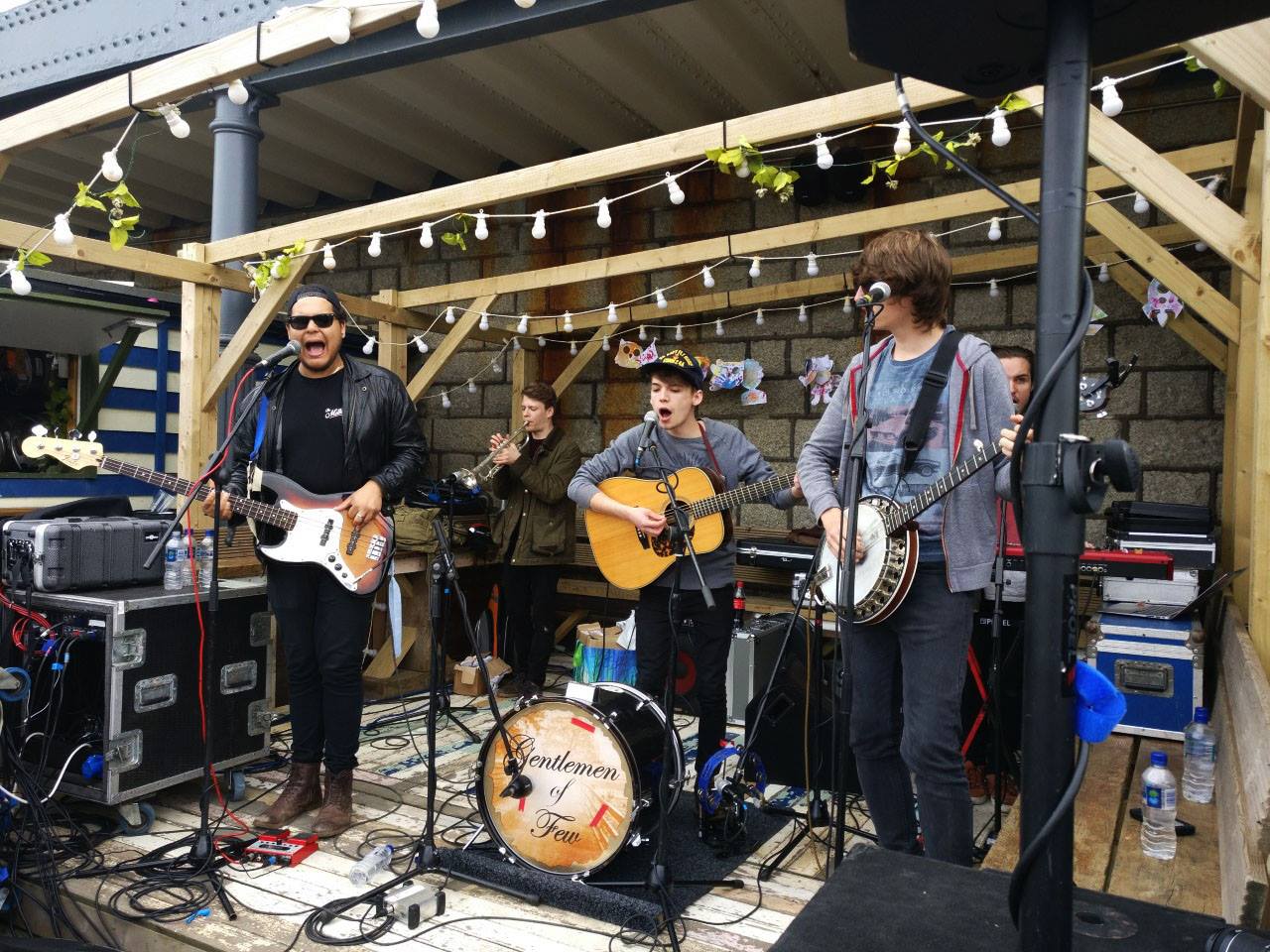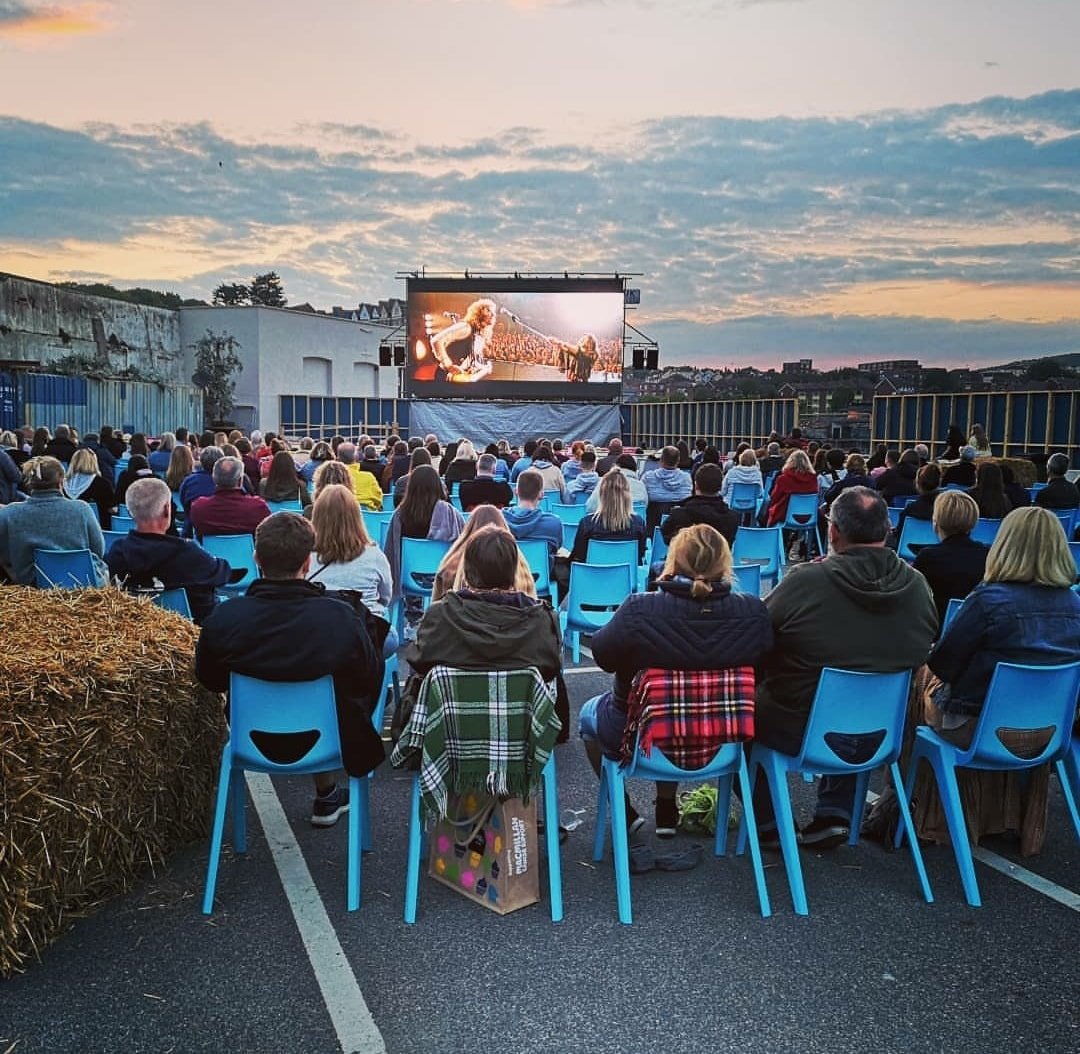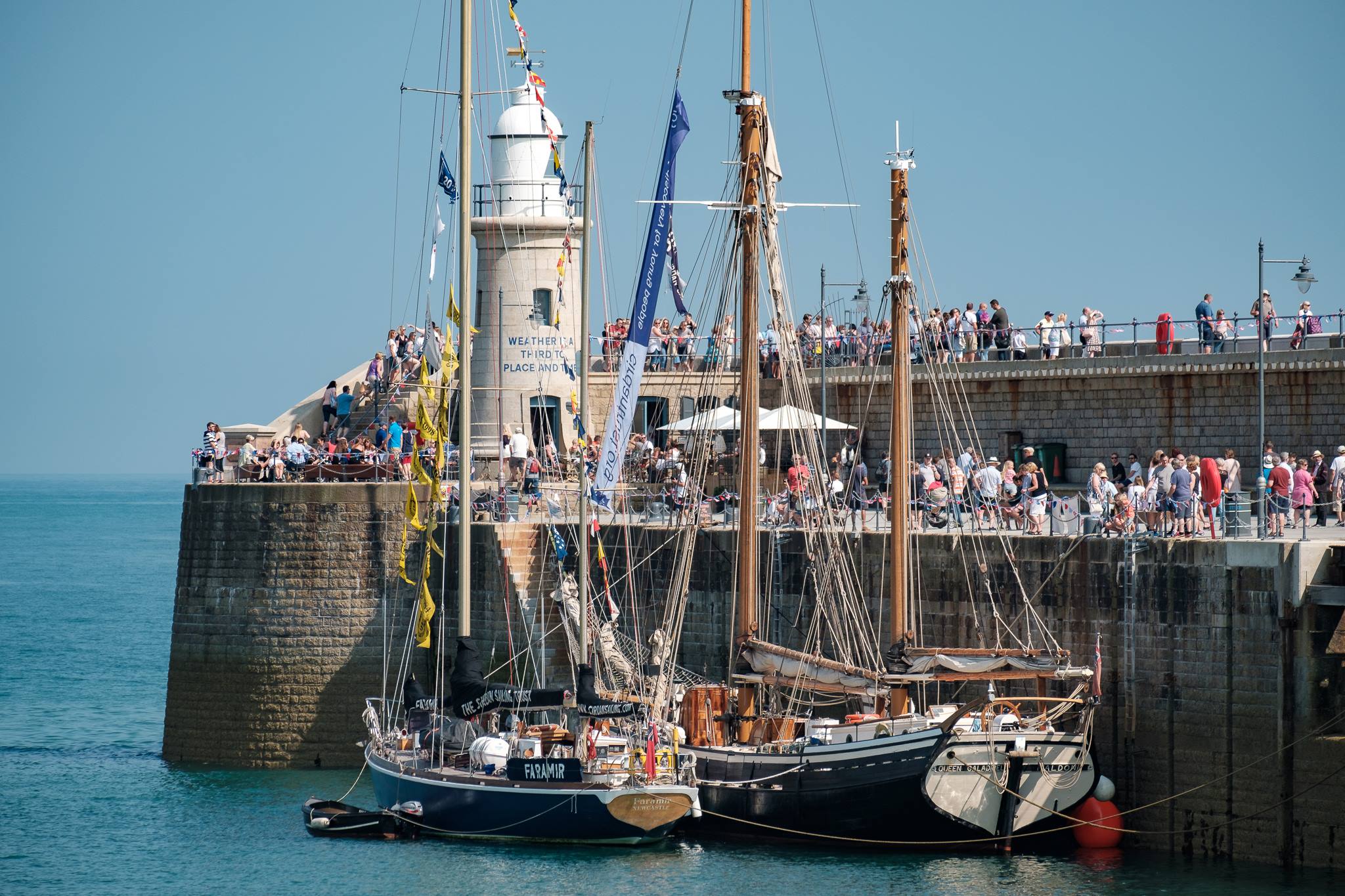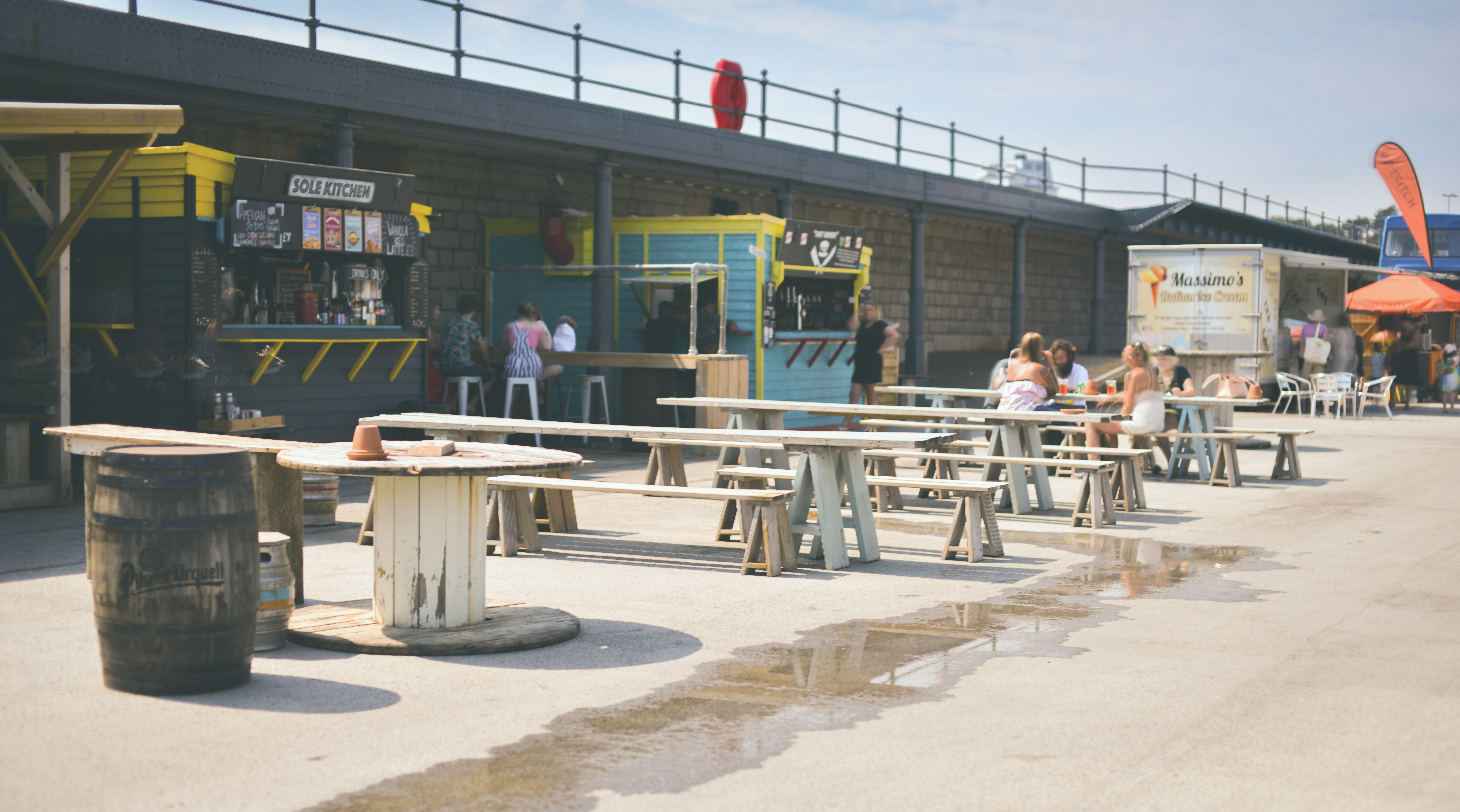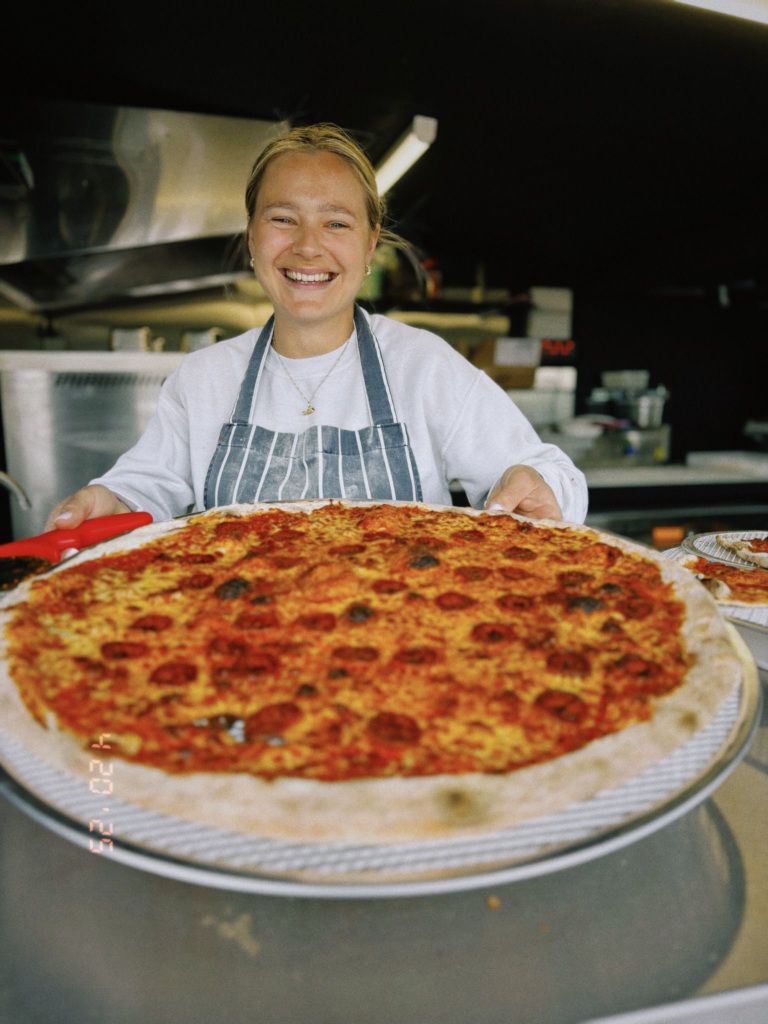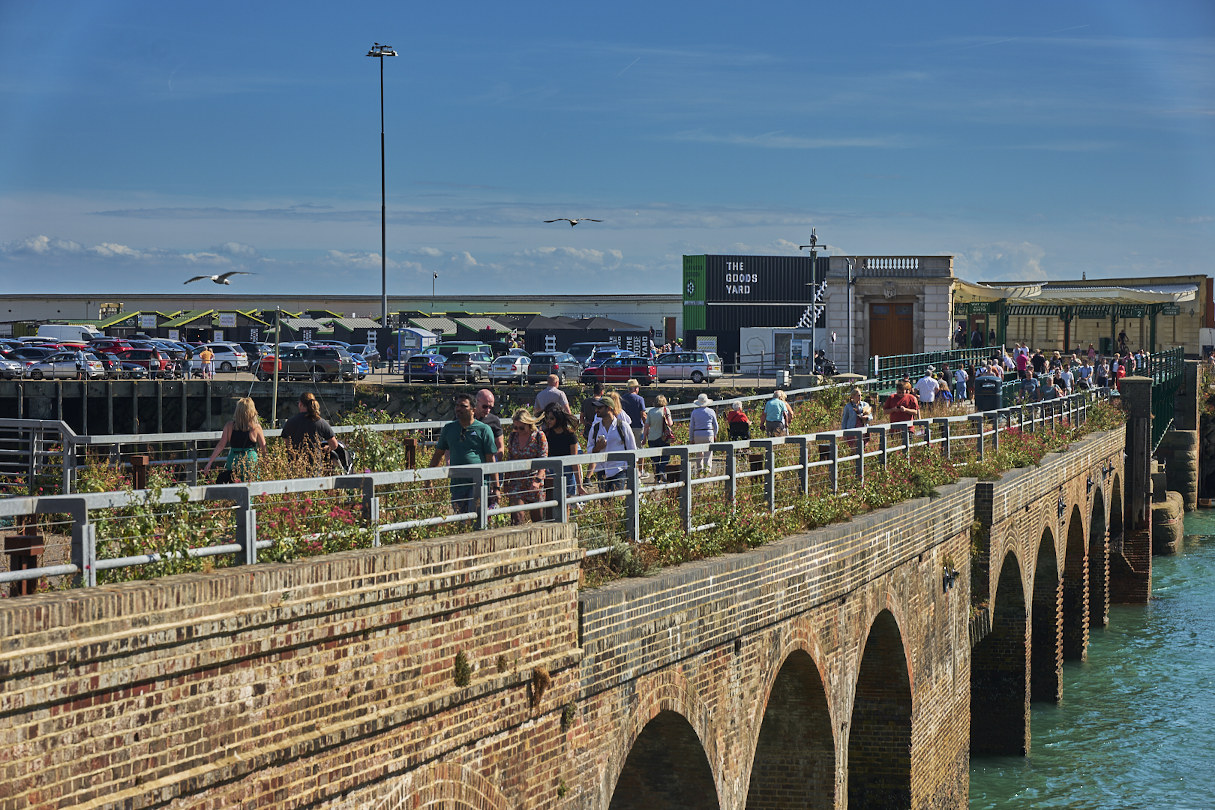Events
The devers – Curating folkestone harbour – 10 year anniversary
Sisters Denice and Diane Dever – the DDs – were tasked with turning a disused, rusty harbour into a space with new economic purpose in 2015. Sir Roger De Haan had bought Folkestone Harbour in 2004 with a view to making it into a university campus. With the 2008 economic crash, the universities lost money and that idea became unviable. Sir Roger had been working with various people including the Mayor of Boulogne to reinstate the ferry services but no operator would take on the risk of working from Folkestone. So a new economic plan was needed for the Harbour and Diane and Denice, who worked for Folkestone Harbour until 2023, were the people to deliver. Folkelife reminisced with them.
Diane: “I think it was March-April time in 2015 when we were asked for a proposal as to how to animate the Harbour Arm. We prepared a document that was a solid programme of what we would do, a test-bed of ideas that would bring people to the Harbour.”
Denice: “There were some really key things we wanted to trial – food and drink offerings, a cinema screen, a market and live performance of dance and music were really important.”
a destination place
Diane: “The area was originally intended to be for promenading with one café and a toilet ratio based on that. But our proposal shifted the thinking straight away. We knew we wanted to become a destination place. Before, it had been part of the border with France, customs and excise. In the past, you only came onto the Arm if you were leaving to go to the continent. The fishermen had access on the upper tier, but the site had been locked off to people for years.
“There had been a huge community of people who had worked here, 300 people over three shifts a day on the trains and the boats. And as soon as it became known what we were doing, people started getting excited. We didn’t have to do much advertising, people came, in their hundreds. It was amazing.”
Denice: “Our job was to bring people to the site, we had to make this a public space that would pay for itself. It had to cover 100 years of maintenance, so that in 100 years’ time the harbour would still be a vital place for Folkestone, full of vibrancy, and not disintegrating into the sea.”
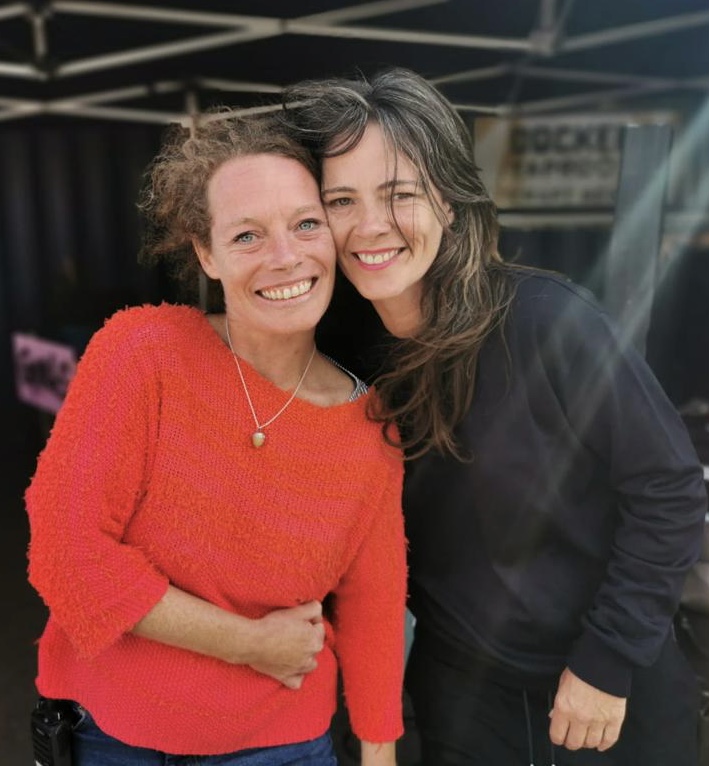
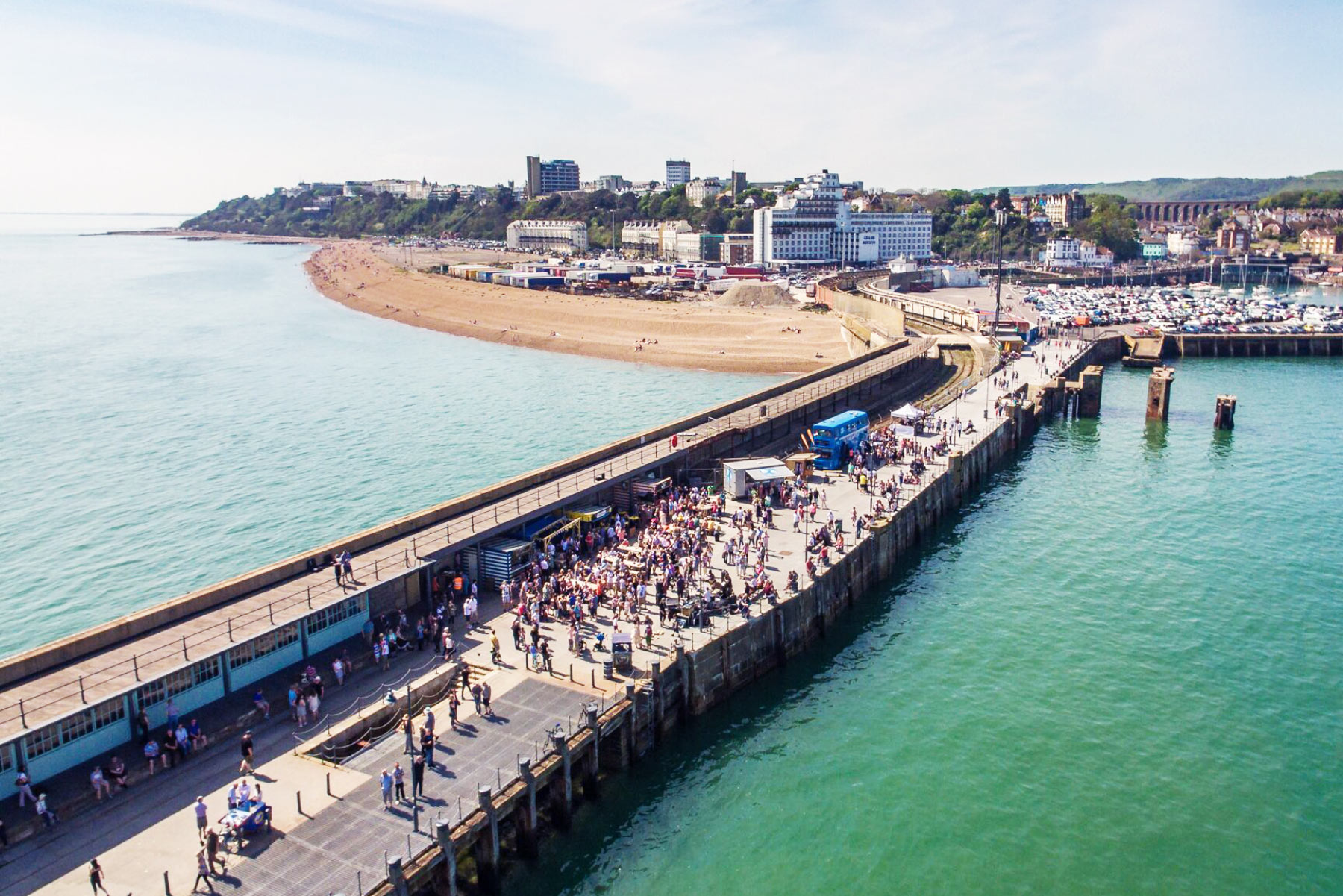
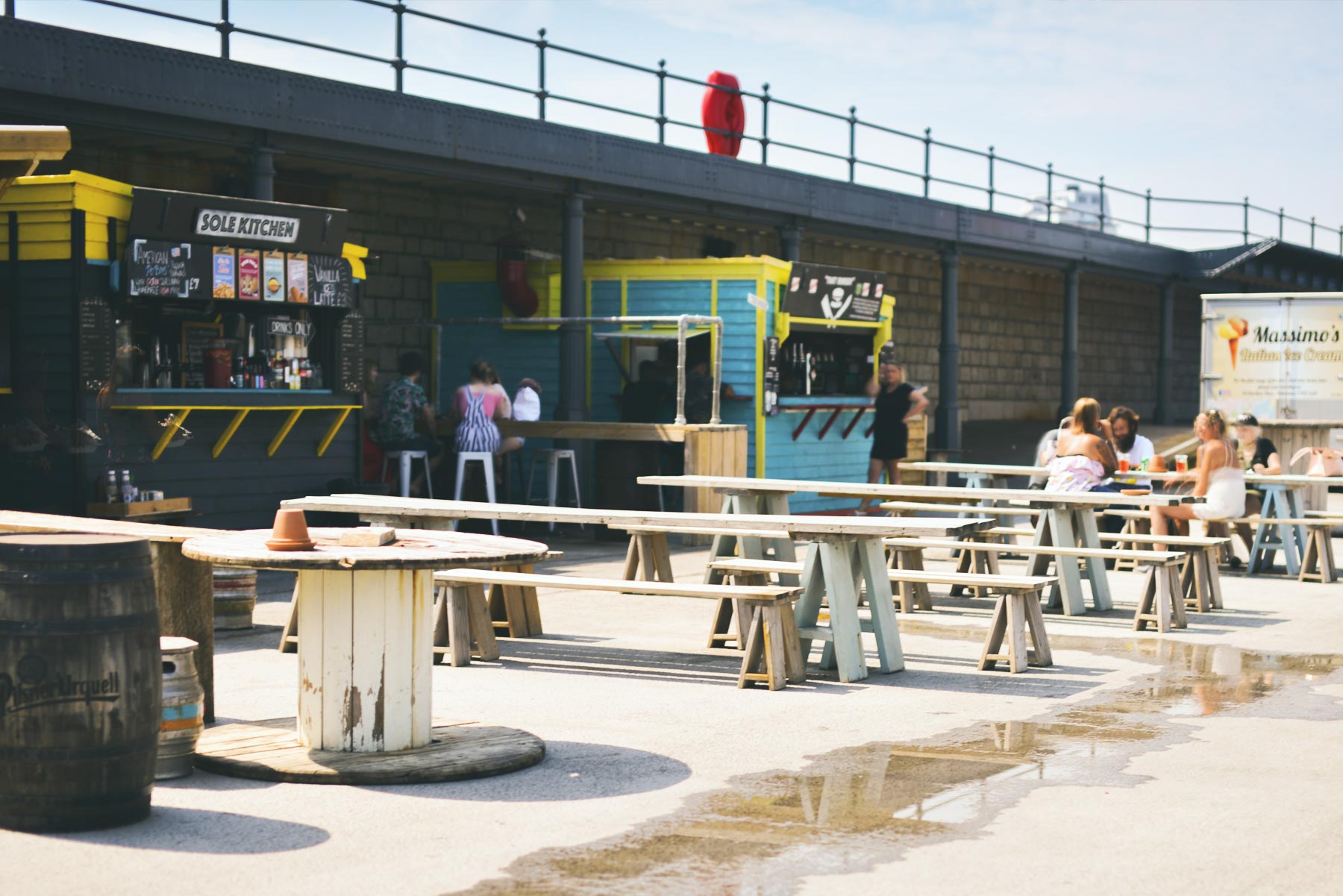
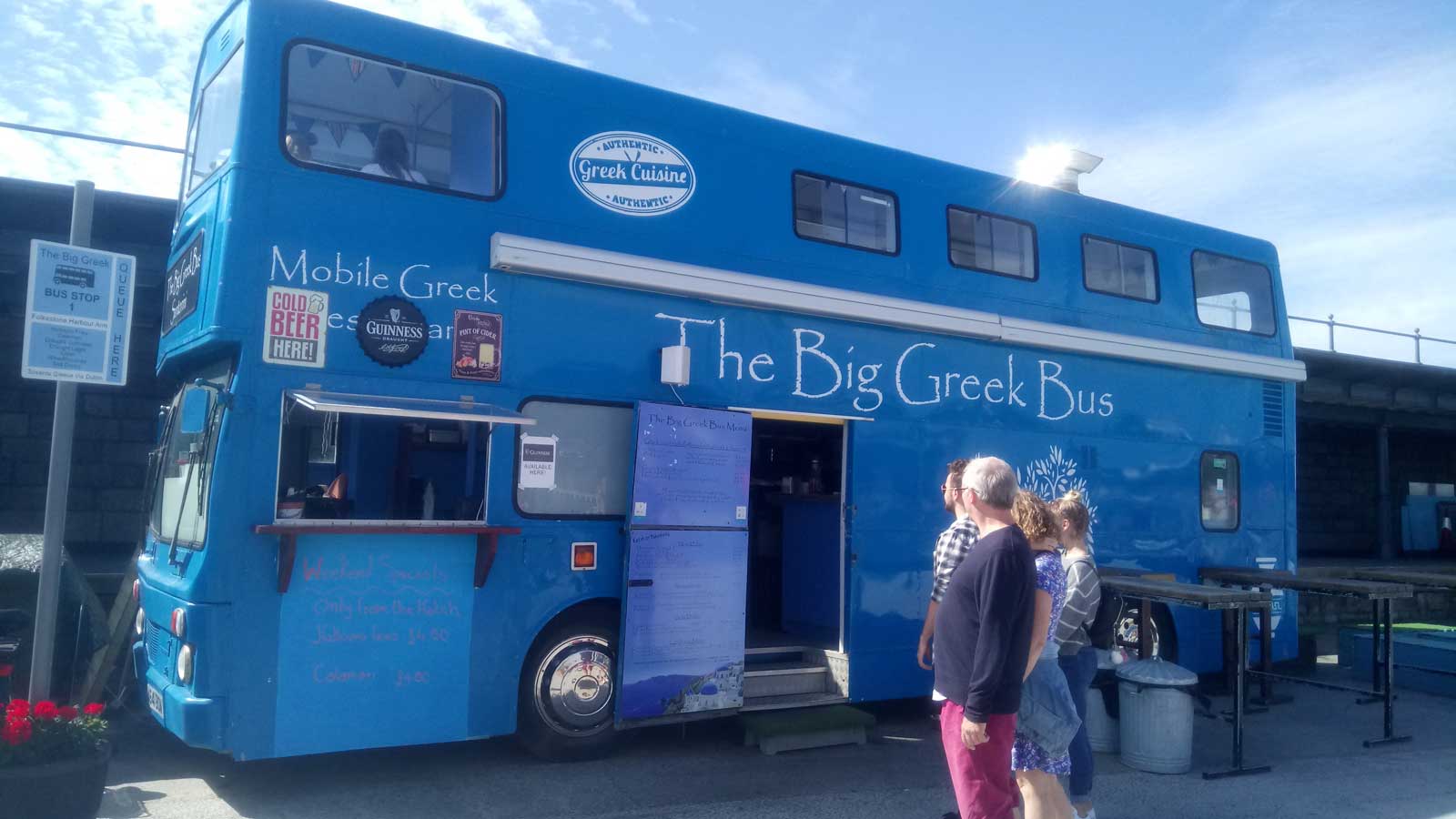
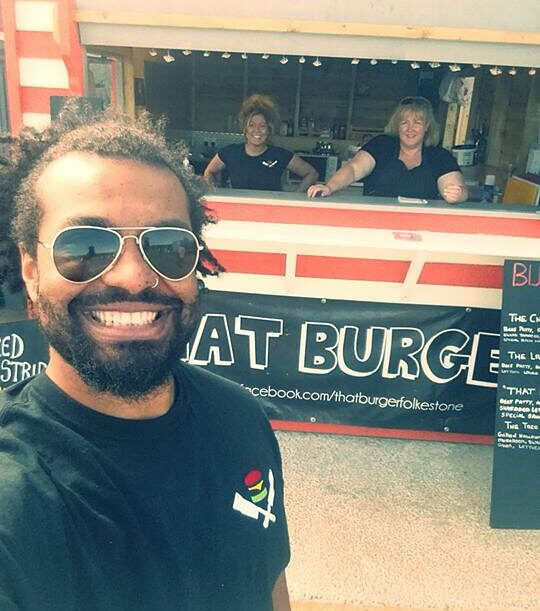
crossing the car park
Diane: “The big question in the beginning was what will bring people back? What will make people return to this space that we love and can see is amazing. So, for the first year we insisted that the rooms were opened up, and that they needed to be kitted out so we could use them properly. We needed running water, electricity, lighting and temporary floors to be put down so we could let people in. The experience of seeing those rooms in their raw state was stunning, and the very fabric of these rooms were saved; keeping the original granite walls visible with no white-boxing.”
Denice: “Another challenge was how could we make people cross the threshold of the car park and come on to a site which had been desolate for so long? It was a task that some people thought we were mad to take on. And the early traders took a risk too. We were looking for people who had the capacity to kit out a space and not need a lot of hand-holding in order to deliver.”
pop ups
Diane: “At the time there were some really exciting pop-ups and supper clubs happening in town. These were entrepreneurial people who were already trying to get an idea off the ground and who would bring people along with them.”
Denice: “Those brave enough to start were Ben and Lucy with the Hog and Hop, Nathan Roberts with That Burger, the Dr Legumes boys and Dougie Richardson with Crabby Shack. Actually, Dougie was really useful as he had been immersed in the food pop-up scene in London, so gave us some really useful guidance on what we were doing down here. Aimi and Abi from Follies set up a pizza oven; I can remember Bernie with the Big Greek Bus at the gates asking to be let in. Then Alison, with Go Dutch, started under a gazebo, which, in high winds, was cable-tied to a lightening column.”
growing quickly
Diane: “Things moved so quickly at that time. We had the basic idea of what we wanted to do and because it was so well received people kept coming. In week two of that first year, Simon and Jess had this fantastic idea to turn the Lighthouse into a champagne bar but the inside wasn’t ready for business. They constructed a bar outside and I can remember them using wheelbarrows, and anything else on wheels, to cart ice and bottles up the Arm.
“The space grew fast, but it was organic. It really did seem to respond to what people wanted, and we needed to deliver everything efficiently and effectively. The Harbour Arm activity needed to attract people as it needed to bring in enough money to pay for what it cost to run it. That’s why it’s great working with local creatives, they’re inventive, have that energy, and are good at working with tight budgets.”
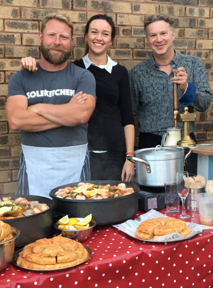
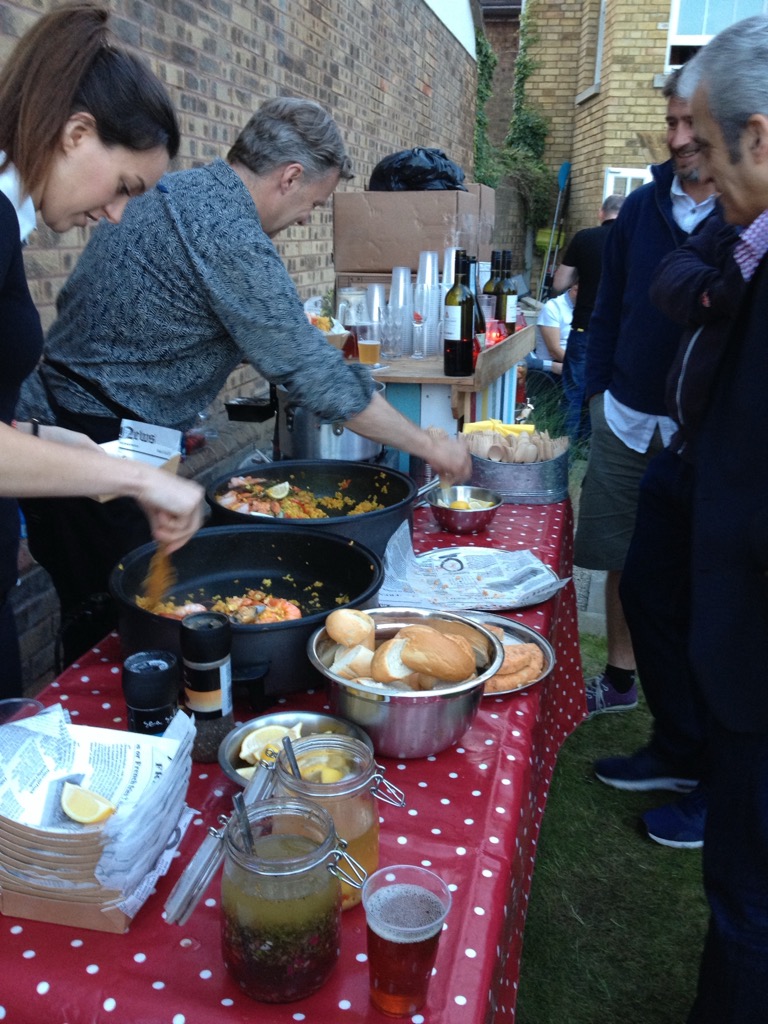
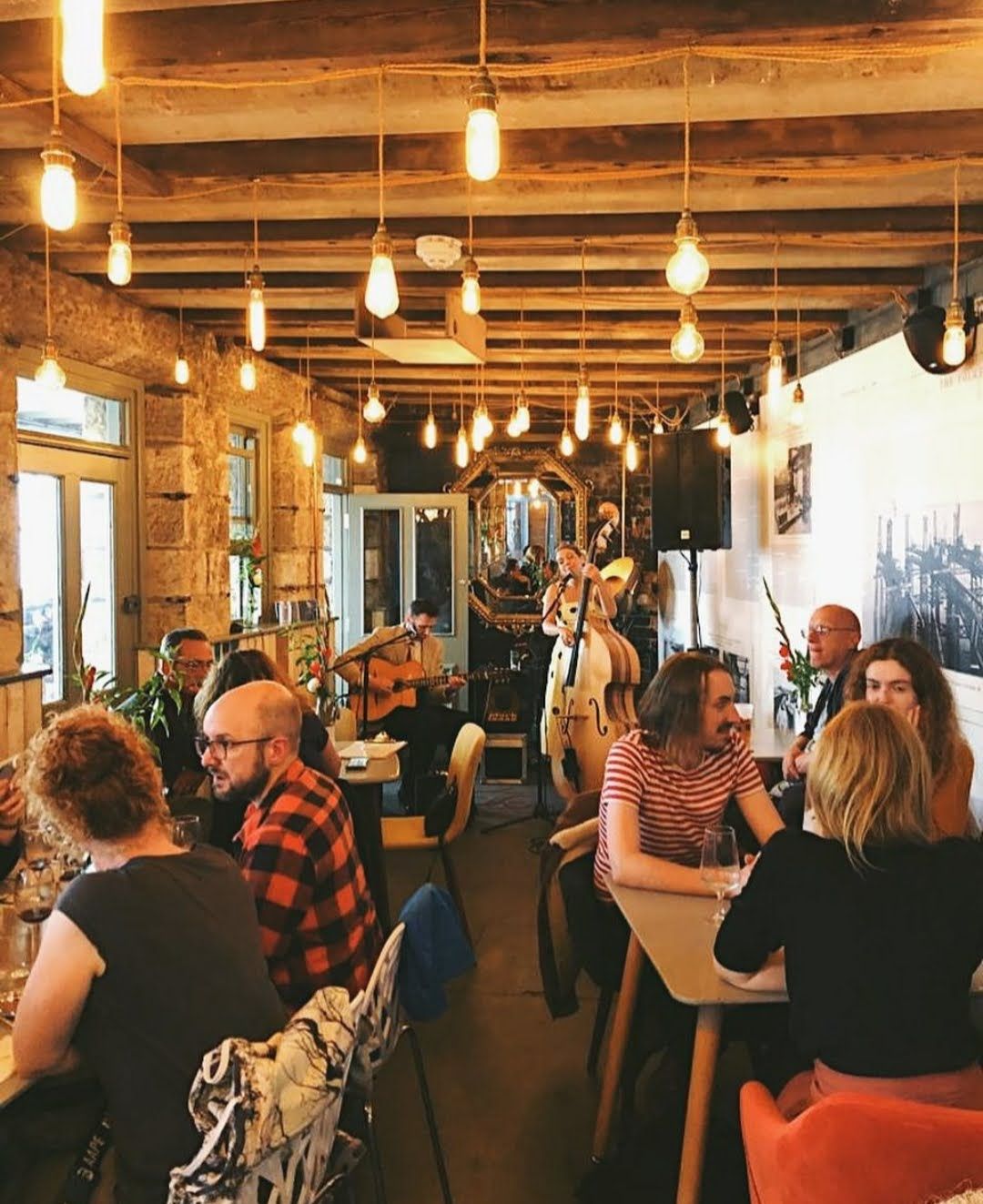
the best team
Denice: “Not everyone started at the beginning. Mike Lake and Mark Babbins came in near the end of that first season. Dougie had gone back up to London so we had a spare unit, and we also needed someone to provide paella for the SALT Festival that was coming up at the end of September. Mark and Michael came along and said they could do paella, that wasn’t a problem. It was delicious too. They only owned up later that they’d never made paella before in their lives!”
Diane: “Oh, the screen. We worked with Folkestone Film Factory and they had an inflatable screen which we put up and took down on screening evenings. I will never do that again! The first time we had it sitting across the pier and it was really tricky as it blocked the thoroughfare. Ideally, I’d have liked to put it out to sea and have everyone watch it from the pier but we had certain limitations with power and wifi and so on. We were blessed with the weather that first year. It seemed it rained during the week, and the sun came out for the 72 hours we were open.
“The energy around the Arm those first years was such that nobody complained. We screened Jaws on that first cinema evening and the picture on the screen was hard to see because we started the show too early and the sun hadn’t gone down, but no-one said anything. They sat there patiently, enjoying the experience and the atmosphere of being on the Arm.”
world music
Denice: “The music was so vital to the space too. We knew that in curating the area there were times when we were doing ‘firsts’ – when it did rain and we needed to move the music programme indoors into the Waiting Room – it would have been the first time those walls, that had facilitated the working harbour, had ever heard a trombone, a violin, an oboe or a keyboard. It was really exciting to experience those moments. We worked with Music For Change which meant we could explore different cultures of music on the pier. There were troupes of Bengali dancers, big brass bands which had a really high impact and on a big scale.”
a five year plan
Diane: “We had been asked to make a five year plan. So after 2015 was over, the pilot year, we were into Year 1 – 2016. We had shown we could do it, we could bring people together into a new space. If you think about it, there wasn’t anywhere else in the town where we could all see each other at the same time and spend time together. You could pass people in the street, but here was a venue which could accommodate everyone in one place, together.
“It had a huge psychological impact; you would hear ‘Oh, my dad used to work here’ or ‘My granddad worked in there’. There were all these stories that were emerging. And East Folkestone looked beautiful from the Arm.”
Denice: “As more of the site was restored and opened up to the public, people were able to appreciate it as a post industrial place. When we closed for the first season, the workmen came back to continue the renovations. I can remember thinking that the Arm hadn’t seen so much activity in years. Those days, before reopening, were really busy with delivery drivers and the harbour forklift raising equipment onto the platform for us.”
a community atmosphere
Diane: “It was a real community. People just helped each other achieve what needed to be done. I can remember being down there at 2am with the electrics being installed. The contractors we were working with had such passion for the buildings too, they were incredible.”
Denice: “The markets were so important too. There were so many significant creatives in the town who helped start the first markets. They could see that there were opportunities, and there was a freedom to do all sorts of things. They could see we were able to facilitate and we could enable people to achieve their ideas. Our policy was to never say no, but by saying yes, we were able to help create something special.”
developing new skills
Diane: “I became very good a picking up cigarette butts. Even found myself doing it down the Sandgate Road! We got some really good training from Ben from The Pullman about how to be good bouncers! Smile. Always with a smile!”
Denice: “There were so many good moments, just seeing people enjoying themselves made the job nothing like a job. It was hard work, but so rewarding. We felt like a custodian of a very special place. And the community elements that were so much a part of everything we did were integral in building that energy and atmosphere.”
Diane: “I can remember thinking we’d made it when I’d asked someone where they’d come from to visit the Arm and they answered ‘Hythe’. I thought ‘Wow, people are coming from Hythe to Folkestone to be on the Harbour Arm! Well, we’ve really made something, this is working!'”
Diane and Denice Dever left Folkestone Harbour in 2023.
